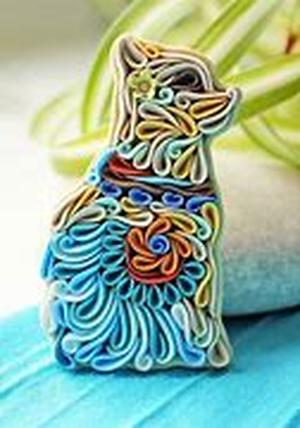
Thanks To Aggressive Publicity Campaigns Sponsored By The Diamond Industry, Anyone Buying A Diamond Can Confidently Go Into The Transaction Armed With Enough Information To Ask The Right Questions. In The Pre-purchase Stage, Youll Likely Query The Seller About The Five Cs: Carat, Cut, Clarity, Color And Cost. As Long As You Trust The Jeweler, You Can Be Confident About The Value Of The Gem Youre Interested In Based On His Or Her Answers. But What About Pearls? What Questions Do You Ask? What Does A High Quality Pearl Look Like? What Are Traits To Avoid? Here Well Tell You What Makes A Pearl Valuable. Well Also Give You Questions To Ask Your Jeweler And Tools To Judge These Lustrous Gems Yourself. Pearl Value FactorsWhile There Is No International Standard For Grading Pearls, There Is A System That Is Commonly Used To Evaluate These Beautiful Colored Gemstones. Developed By The Gemological Institute Of America (GIA), The Worlds Largest Non-profit Institute Of Gemological Research And Learning, This Grading System Considers Seven Pearl Traits When Determining Value. They Are: Size, Shape, Color, Luster, Surface Quality, Nacre Quality, And Matching. Lets Take A Look At Each One As It Relates To The Beautiful Cultured Pearl.Pearl Size Pearls Can Be As Small As A Pinhead Or Nearly As Big As A Golf Ball, But, Of Course, Somewhere Between These Two Extremes Is The Norm. Size Is Determined By Many Factors. These Include The Size Of The Animal That Produces The Gems, The Size Of The Implanted Bead, The Length Of Time The Oyster Or Mollusk Was Allowed To Form The Pearl, The Climate And Conditions Of The Environment, And The Health Of The Animal That Produced The Pearl. Different Types Of Pearls Have Different Expected Size Ranges. For Example, Because They Are Produced In A Relatively Small Oyster, Akoya Cultured Pearls Are Usually Much Smaller Than Their South Sea Counterparts, Which Are Grown In One Of The Worlds Largest Mollusks, P. Maxima. This Large Animal Can Accept A Larger Bead Nucleus And Can Lay Down Nacre, The Combination Of Organic Substances That Makes Up A Pearl, Much Faster Than Its Smaller Cousin. Be Sure To Find Out What Type Of Pearl Youre Looking At (freshwater, Akoya, South Sea Or Tahitian). All Have Different Expected Size Ranges, And Anything Outside The Range Will Be Reflected In The Price. A Guide: Akoyas Typically Range From 2-11mm; Tahitians From 8-14mm; South Sea Pearls From 9-20mm, And Freshwater Pearls From 4-11mm. All Other Things Being Equal, A Larger Pearl Will Command A Higher Price. Larger Pearls Typically Take Longer To Grow, And Are Not As Common As Smaller Pearls. As In Anything, However, Beauty Is In The Eye Of The Beholder. For Some People, Another Pearl Value Factor, Such As Luster, May Be More Important Than Size. When Evaluating Size, Keep In Mind That High Quality Small Pearls Exist, As Do Poor Quality Large Pearls. Thus, Pearl Size Is Only One Factor To Consider When Judging Pearl Quality. Which Brings Us To Shape Close Your Eyes And Picture A Strand Of Pearls. What Do You See? Probably A Lustrous Necklace Of White Round Gems, Right? Thats Because The White Round Pearl Necklace Is A Timeless Jewelry Staple And Traditional Classic In Many Cultures. As You Can Expect, Round Pearls Are Desirable Due To Demand, But They Are Also Valuable Because They Are Rare. (Think About It: Irritant Enters Oyster, Oyster Secrets Nacre, Nacre Covers Irritant. Pearl Comes Outround? Doubtful.) Although Pearl Culturing Techniques Are Improving All The Time, A Perfectly Round Pearl Is Uncommon. (Akoya Crops Typically Contain More Spherical Pearls Than Other Pearl Types.) According To GIA, Collecting Enough High Quality Round Cultured Pearls For A Matched Pearl Strand Can Take Years. Round Or Near Round Pearls Will Command More Money Than Other Shapes. Thats Not To Say That Other Shapes Arent Valuable. (Remember Again The Adage Beauty Is In The Eye Of The Beholder.) According To GIA, Drop Shapes Can Sometimes Match The Value Of Rounds, Especially When Theyre Symmetrical And Well-formed. Not A Traditionalist? Pearls Come In Many Shapes, And, Depending On What You Like, Can Be Just As Desirable, But Less Costly, Than Round. Pearl Shapes Include Button, Oval, Drop, Semi-baroque And Baroque. Some Pearls Even Resemble Bars, Crosses, And Coins. Some, Called Circled Pearls, Have Grooves That Go Around The Gems Circumference. These Beauties Can Make Wonderful Jewelry. GIA Classifies Pearls Into Three Major Shape Categories:1.Spherical: Round Or Near Round Pearls2.Symmetrical: When Bisected, These Pearls Have Equal Halves 3.Baroque: Pearls With No Discernable SymmetryAlthough Pearl Shapes Vary, Those That Display Some Type Of Symmetry Typically Cost More. But Baroque Pearls, Either When Set Alone Or Grouped With Similar Shapes Into A Necklace Or Bracelet, Can Be Highly Beautiful And Unusual. And Baroque Pearls Often Show Orient, A Desirable Shimmering Rainbow-like Effect That Adds To The Pearls Value. Many Designers Prefer To Work With Baroque Pearls For Their Infinite Design Possibilitiesand Many Consumers Buy Them For Their Unique Beauty. Color Although White Will Likely Always Win The Pearl Color Popularity Contest, Pearls Come In A Wide Array Of Gorgeous Colors. From The Aforementioned White To Grey-black, Pearls Can Also Be Lavender, Pink, Orange And Many Shades In Between. The Choice Is Up To You, But Keep The Wearers Skin Tone In Mind When Choosing: Pearl Color Should Complement The Wearers Coloring. When Describing A Pearls Color, Jewelers Talk About Three Traits: Hue, Which Is The Overall Pearl Colorthe One You See On First Impression; Overtone, Which Is Not Always Present But Which Is The Secondary Color You See When You Look At The Pearl (i.e. A Pinkish Blush On A White Pearl) And Orient, Which Is Also Not Always Present, But, As Mentioned Above, Can Best Be Described As A Colorful, Rainbow-like Sheen.The Popularity Of Pearl Colors Waxes And Wanes; Value Is Determined By Whats In Fashion. As Can Be Expected, White Is Always In. Lavender Pearls Are Very Popular Right Now Too. And Tahitian Cultured Pearls, Which Are Typically Dark Gray, Dark Green, Or Dark Bluepurple Were, Amazingly, Pretty Much Unheard Of Before The 1970s, But Are Now Widely Covetedand Very Costly. Sometimes, Too, A Model Or Celebrity Will Wear A Certain Pearl Color And That Color Will Experience A Surge In Popularity. As With Size, Pearl Types Display Typical Characteristics When It Comes To Color. Akoyas, For Example, Are Usually White Or Cream; Tahitians Are Typically Black, Gray Or Brown; South Sea Are Usually Silver, White Or A Gorgeous Golden Color, And Freshwater Come In White, Cream And A Wide Array Of Pastels. Acording To GIA, If The Desirable Pearl Color Is Rare, Fine Pearls Displaying That Color It Will Command High Prices. Luster Because Pearls Are Known For Their Inner Glow, A Trait That Sets Them Apart From Other Gems, This Value Factor Trumps All Others. According To GIA, Luster Is The Most Important Of All The Value Factors To The Beauty Of A Pearl. Dependent On Many Factors, Among Them Nacre Thickness And Growth Conditions, Luster Is Only Good When Nacre Is Translucent And Its Plates Overlap In Such A Way That The Pearl Appears Lit From Within. Thick Nacre Does Not Guarantee Sharp Luster, But It Certainly Helps. The Sharper The Reflection On A Pearl, The Better The Luster. GIA Defines Four Categories Of Luster:Excellent: Reflections Are Bright, Sharp And DistinctGood: Reflections Are Bright But Not Sharp, And Slightly Hazy Around The EdgesFair: Reflections Are Weak, Hazy And BlurredPoor: Reflections Are Dim And DilutedLuster Is One Of The Easiest Pearl Value Factors To Rate. Just Hold An Object, Like A Pen, Close To The Pearl. (Be Careful Not To Get Ink On The Gem.) The Sharper The Reflection, The Better The Luster, And The More Valuable The Pearl Will Be. Note, Though, That Each Pearl Type Has Its Own Characteristic Luster. Akoyas Are Known For Their Sharp, Fine Luster, While South Sea Cultured Pearls, For Example, Have A Subtler, Softer Glow. Surface QualityPearls Are Organic, And Therefore Imperfect, Meaning They Are Not Uniform, Shiny, Perfectly Round Orbs Every Time They Come Out Of An Oyster. Rather, As Natural, Layered Objects, They Show Many Surface Characteristics Such As Abrasions, Bumps, Chips, Cracks, Pits, Scratches And Wrinkles. Most People Will Never See A Perfect Pearl In Their Lifetime, And Indeed, Minor Surface Irregularities Do Not Detract From A Pearls Value. As Defined By GIA, There Are Four Classifications Of Pearl Surface Characteristics:Clean: Pearl Can Be Blemish-free, Or Spotless, Or Contain Minute Surface Characteristics That Are Very Difficult To See When Examined By A Trained ObserverLightly Blemished: Pearls Show Minor Surface Irregularities When Inspected By A Trained ObserverModerately Blemished: Pearls Show Noticeable Surface CharacteristicsHeavily Blemished: Pearls Show Obvious Surface Irregularities, Which Can Compromise DurabilityThe Pearls Overall Appearance Will Determine Its Value. Obvious Or Multiple Surface Characteristics Or Large Blemishes That Affect The Gems Durability Will Detract From Its Value, While A More Clean-looking Pearl Is Worth More. Most Of Us Cannot Afford A Perfect Strand Of Pearls, But, Luckily, Small Bumps And Blemishes Can Often Be Hidden By A Drill Hole. According To GIA, A Completely Clean Pearl Is A Rare Treasure. Since Rarity Influences Value, The Prices Of Such Pearls Run Extremely High. Most Consumers Must Settle For Some Degree Of Surface Irregularity In The Pearl They Purchase. Even The Finest Pearls Can Contain Minor Surface Characteristics.Nacre QualityDirectly Tied To Luster, Nacre Qualitythickness Is A Very Important Value Factor Which, Fortunately, Can Be Judged By The Naked Eye. Its Better, Of Course, To Evaluate Thickness With An X-ray Machine Or By Cutting The Pearl, But Most Of Us Dont Have Such A Machine, Nor Do We Want To Wear Pearls That Have Been Chopped In Half. (Picture That For A Minute!)Take A Look At The Pearl You Wish To Evaluate. A Chalky, Dull Appearance Means That The Nacre Is Probably Thin. In Some Cases, The Nacre Is So Thin That The Bead Nucleus Shows Through. Do Not Purchase These Pearlsthey Wont Last! GIA Classifies Nacre Into Three Categories:Acceptable: The Pearls Nucleus Is Not Noticeable And The Gem Displays No Chalky AppearanceNucleus Visible: The Pearl Shows Evidence Of Its Bead Nucleus Through The Nacre. The Pearl Shows Strong Blinking (a Flickering Of Light And Dark) When It Is Rotated Across A Light SourceChalky Appearance: The Pearl Has A Dull, Matte AppearanceThin Nacre Has A Negative Effect On A Pearls Value, Although Thick Nacre Does Not Guarantee Sharp Luster. Thin Nacre Can Crack, Peel Or Otherwise Deteriorate And The Pearls Wont Last Very Long. (Unlike Other Gems, Polishing A Pearl Does Not Restore Its Original Beauty.) Pearls With Thicker Nacre Are More Durable And More Valuable. Ask About Nacre Thickness If You Have The Opportunity. Interesting Fact: Many Freshwater Cultured Pearls Are Cultured With Mantle Tissue Only, Rather Than A Mother-of-pearl Bead, And, As A Result, Are Nearly Solid Nacre. Many Pearl Experts Say That Todays Freshwater Cultured Pearls From China Now Rival The Beauty Of Japanese Akoyas!Matching As You Can Imagine, This Pearl Value Factor Only Comes Into Play When A Piece Of Jewelry Contains More Than One Pearl. Some Designers Intentionally Mismatch Pearls For Aesthetic Effect, But When A Strand Is Meant To Be Uniform, How Well The Gems Match Is An Important Consideration. Fortunately, This Is Easy To Determine. Just Look At The Strand And Note Any Obvious Differences In The Gems. (Some Jewelers Will Try To Hide Small Or Imperfect Pearls Near The Clasp, So Check This Area Carefully.) When Evaluating A Matched Strand, Keep In Mind That Cultured Pearls Are Organic, Not Poured From A Factory Mold. No Two Are Exactly Alike, Therefore It Is Impossible To Make A Perfect Match. This Does Not Detract From The Jewelry, Though, As Long As, On A Whole, The Piece Is Uniform. To Test, Look At The Strand, Hold It Up Close And Also View It At Arms Length. Are The Pearls The Same Overall Size? Color? Shape? Luster? Nacre Quality? If They Look The Same, Theyre Well-matched.GIA Defines Three Categories Of Matching:Excellent: Pearls Are Uniform In Appearance And Drilled In The CenterGood: Piece Shows Minor Variations In UniformityFair: Pearls Are Noticeably Different From One Another According To GIA, It Takes An Enormous Amount Of Skill And Labor To Sort Harvested Pearls. The Time And Effort Involved In Producing A Well-matched Strand Of Pearls Will Reflect Its Market Price.ConclusionBecause They Are Produced In Different Animals In Different Environments Under Unique Conditions, Each Pearl Type Has Its Own Expected Characteristics. When The Traits Shown For A Certain Pearl Are Outside The Norm For Its Type, The Pearl Will Be More Valuable. Each Pearl Is Unique, And Uniquely Beautiful. Which Pearl And Pearl Type Is The Most Beautiful? Its Up To You. (This Author Is Partial To White Baroque Freshwater Pearls And Golden Round South Sea Pearls.) Go Shopping!Congratulations! Now You Know What To Look For And What Questions To Ask When Shopping For Pearls. Remember, A Pearls Worth Depends On Its Overall Look--how Well It Combines The Seven Value Factors. Keep In Mind That Not All Value Factors Are Important To All People. You May Be More Interested In Pearl Color Than Pearl Size, For Example. As With Anything, Individual Tastes Reign Supreme. Now, Go Forth And Buy With Confidence.





